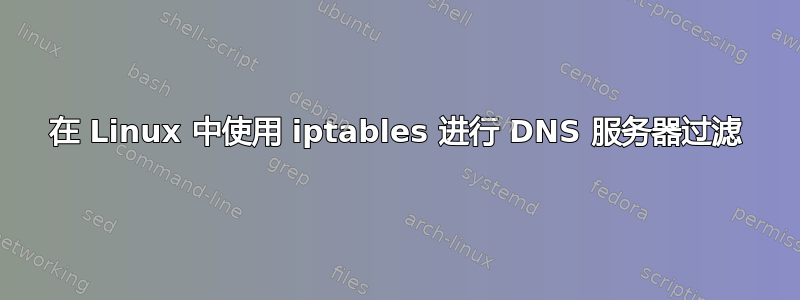
我正在尝试在 debian 上使用 bind9 作为 DNS 服务器。在我添加 iptables 防火墙之前,它一直正常工作。我尝试了以下过滤器,但似乎不起作用。有人可以帮忙吗?
# DNS
-A INPUT -p tcp -m tcp --dport 53 -j ACCEPT --syn
-A INPUT -p udp -m udp --dport 53 -j ACCEPT
-A INPUT -p udp -m udp -s 0/0 -d 0/0 --sport 53 -j ACCEPT**
我的完整过滤器是,粗体实际上是使用“#”注释的行,我找不到如何防止:
*筛选
# Samba
-A INPUT -p udp -m udp --dport 137 -j ACCEPT
-A INPUT -p udp -m udp --dport 138 -j ACCEPT
-A INPUT -m state --state NEW -m tcp -p tcp --dport 139 -j ACCEPT
-A INPUT -m state --state NEW -m tcp -p tcp --dport 445 -j ACCEPT
# SYN Flood Protection
-A INPUT -p tcp --syn -m limit --limit 5/second -j ACCEPT
# Allows all loopback (lo0) traffic and drop all traffic to 127/8 that doesn't use lo0
-A INPUT -i lo -j ACCEPT
-A INPUT -i ! lo -d 127.0.0.0/8 -j REJECT
# Accepts all established inbound connections
-A INPUT -m state --state ESTABLISHED,RELATED -j ACCEPT
# Allows SSH connections
# THE -dport NUMBER IS THE SAME ONE YOU SET UP IN THE SSHD_CONFIG FILE
-A INPUT -p tcp -m state --state NEW --dport 22 -j ACCEPT
# My webmin custom port
-A INPUT -p tcp -m tcp --dport 10000 -j ACCEPT
#POP mail <br>
-A INPUT -p tcp -m tcp --dport 110 -j ACCEPT --syn
#SMTP Traffic <br>
-A INPUT -p tcp -m tcp --dport 25 -j ACCEPT --syn
#HTTP <br>
-A INPUT -p tcp -m tcp --dport 80 -j ACCEPT --syn
#HTTPS <br>
-A INPUT -p tcp -m tcp --dport 443 -j ACCEPT --syn
# IMAP mail services <br>
-A INPUT -p tcp -m tcp --dport 143 -j ACCEPT --syn
# Allow ping
-A INPUT -p icmp -m icmp --icmp-type 8 -j ACCEPT
# DNS
-A INPUT -p tcp -m tcp --dport 53 -j ACCEPT --syn
-A INPUT -p udp -m udp --dport 53 -j ACCEPT
-A INPUT -p udp -m udp -s 0/0 -d 0/0 --sport 53 -j ACCEPT
# Localhost traffic <br>
-A INPUT -i lo -j ACCEPT
# log iptables denied calls (access via 'dmesg' command)
-A INPUT -m limit --limit 5/min -j LOG --log-prefix "iptables denied: " --log-level 7
# Reject all other inbound - default deny unless explicitly allowed policy:
-A INPUT -j REJECT
-A FORWARD -j DROP
# The below commits the rules to production for iptables to execute <br>
COMMIT
答案1
您打印的配置是正确的。使用“iptables -L”命令检查实际的 iptables 配置状态是否与该状态匹配。您可以使用“iptables -F”和“iptables-restore < conffile”确保实际配置反映了您的配置文件。
附注:您可能希望将您的配置分解为链式,以简化操作。


